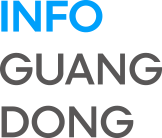
Sophaphone Heuanglith and her colleagues from Laos were moved to tears when they saw children with cochlear implants sit in the same classroom with ordinary children to study, with a large screen displaying subtitles to assist them.
The special education teachers in China instruct hearing-impaired children with great enthusiasm, patience and a wealth of teaching methods, said Heuanglith, a post-90s special education worker from Laos.
"However, in my home country, limited resources and the need to juggle multiple responsibilities often make it difficult to retain excellent teachers who are dedicated to teaching children with special needs," she said.
Teachers in Laos usually have to give more but do not necessarily receive corresponding rewards, said Heuanglith, who established the first private school for hearing-impaired children in Laos. It was unbelievable to learn that the Guangdong Provincial Disability Rehabilitation Center provides free rehabilitation services to all disabled residents with household registration in the province, she said.
In Heuanglith's eyes, China's education for the hearing-impaired people has already become highly advanced, with both special education and inclusive education.
For instance, the Guangzhou Qicong School, which was initially built as the Guangzhou Deaf School, began to have children with normal hearing study together with hearing-impaired children in recent years. "The approach (inclusive education) helps hearing-impaired children better adapt and integrate into society, while for ordinary children, it can educate them to understand the diversity of the world and develop greater tolerance and empathy," Heuanglith said.
With limited access to teaching resources, methodologies, and even sign language teaching materials in her home country, Heuanglith was eager to learn from external sources from the very beginning. She once had a deep dream to observe the deaf schools in China, to have dialogues with Chinese special education professionals, and to bring back advanced experiences to Laos.
Upon learning of Heuanglith's needs, volunteers from the China Southern Power Grid, a company which supplies electricity to the China-Laos railway line in Laos, decided to launch a "transnational initiative", which helped Heuanglith fulfill her wish to come to China and get advanced experience about deaf education in 2022.
In Guangzhou, capital of Guangdong province, Heuanglith met and discussed special education with He Jingxian, former principal of the Guangzhou Qicong School.
As a pioneering figure in Chinese deaf education born in the 1940s, He gently and patiently answered all of Heuanglith's questions. Despite the decades of age gap and differences in their sign languages, the two principals had an unspoken bond strengthened by a shared love for deaf children.
Over her one-week trip in China, Heuanglith found herself immersed in a community that was both hauntingly familiar and startlingly new. The radiant smiles of children lit up her heart like a warm homecoming. What truly moved her was witnessing young deaf children in China speaking with unwavering confidence through cochlear implants — although sign language, once their primary means of communication, is still valued for its role.
In China, she saw a system that embraced the deaf from their earliest moments, guiding them through every stage of life: from screening and rehabilitation to schooling, career development, and inclusive public services. It gave her a vision of boundless possibilities, she said.
CSG facilitated Heuanglith's China trip and made it part of the documentary Hands of Hope, aiming to promote cultural exchanges between China and Laos.
Co-created by the China Review Studio, Discovery Channel and CSG, Hands of Hope is China's first multilingual documentary exploring the heartfelt stories of deaf educators and communities bridging borders with compassion and understanding.
The project underwent nearly two years of hard work, as the production team journeyed across vast distances — tens of thousands of kilometers between China and Laos. Through their lens, they captured intimate moments of sincere exchange between deaf communities and educators from both countries, revealing a world rich in silent understanding and profound connection.
The documentary made its inspiring global debut in September.






